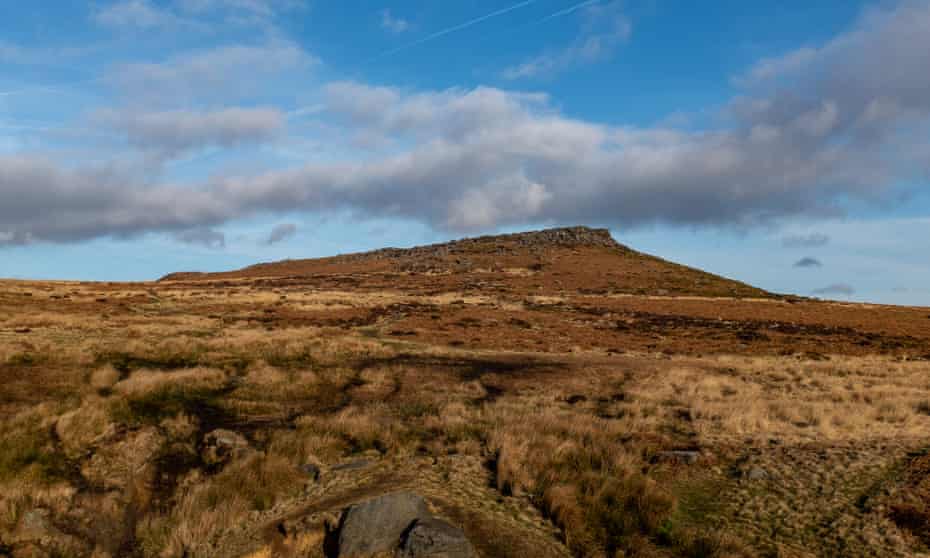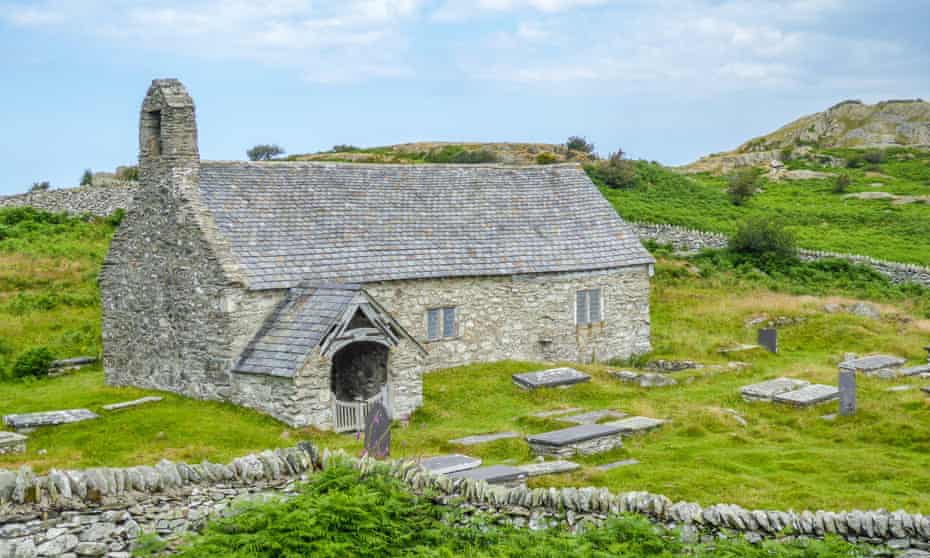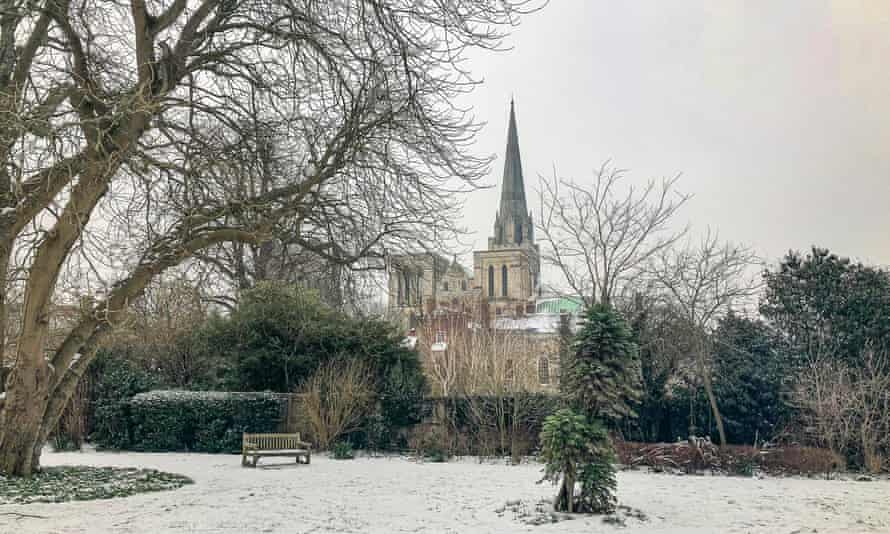When we are set free from our confinement, what are the safe options for venturing out? Last year was the year of walking outdoors, so perhaps – and I may be biased – 2021 will be the year for pilgrimages, given that throughout history people have made pilgrimages at times of crisis? To lay the ground for rediscovery, in summer 2020 the British Pilgrimage Trust (BPT) launched Britain’s Pilgrim Places, a compendium of 600 sites and 100 routes, which I co-authored.
Walking outdoors is how, throughout history, many of humanity’s greats have found meaning, made discoveries, and embarked upon new paths of inner discovery. In Thinking, Fast And Slow, Nobel-prize-winning economist Daniel Kahneman explains how walking is the perfect ambulatory speed to free our minds. As we sit in our chairs, our minds are good at executing tasks but not at thinking big. Going for a run clears our mind, but it’s hard to keep your train of thought. Walk, however, and your mind can become the blue sky above you, allowing your thoughts to soar and form new connections. Extended walking also frees your emotions.
To gain the richest inner experience while walking, it helps to be ever-present to all around you: plants, animals, birds, landscapes, skies, paths, villages, architecture, sounds, smells, textures, weathers. Achieve this and you will feel more connected to nature and humanity.
So, walking can be reframed without needing to mention the word pilgrimage. But some kind of defining characteristic of pilgrimage is useful – structuring a walk around a unique purpose, determined by your heart and activated by your feet. All of us usually have at least one question we want answering, something we want to bring into our lives, or let go of. So choose one “intention” from your many options and dedicate your journey to that purpose.
Once you have set your intention, you need a good destination. This can be traditional, like those described below, or somewhere less obvious such as an ancestor’s grave or a place where you have felt loved.
That being said, the most well-established, accessible routes tend to have “tried and tested” traditional destinations. My book can help with that, along with websites such as megalithic.co.uk, explorechurches.org and LabyrinthsinBritain.uk. These examples are accessible via Google Maps and britishpilgrimage.org, once Covid restrictions have been lifted. But right now, seek out your local place of pilgrimage.
St Magnus Way

Orkney is about as remote and free of humans as it’s possible to get in Britain. A typical landscape is flat with gentle hills leading the eye to the high cliffs of the west coast. If over the past year your imagination has been limited by your home’s four walls, there are fewer antidotes better than the expansive sky here.
There is an ancient but newly waymarked 58-mile pilgrimage route inspired by the life and death of Magnus, Orkney’s patron saint, who lived in a not-so-saintly period of history. Magnus was tricked and then killed by his cousin Håkon so that he could rule the Earlship instead. The route follows the procession of Magnus’s body after his mother pleaded for it to be returned from the island of Egilsay, where he was martyred, to his (first) burial place in Birsay. His body was later exhumed, and the second part of the route represents its later journey to the cathedral at Kirkwall.
Getting to Egilsay by ferry, walking the pilgrimage route on the island and then returning takes a day. The second stage, from Evie to Birsay, follows the journey of Magnus’s body via coastal routes with breathtaking views, and passes “Mansie” (Magnus) stones marking where his coffin rested along the way. The coastal walking along this section can be affected by Atlantic storms and tides and the Magnus Way website recommends planning extra days in case of unpredictable weather – throughout the year. The final leg to Kirkwall follows the gentler coastal waters of Scapa Flow, one of the largest natural harbours in the northern hemisphere, before reaching the magnificent Saint Magnus Cathedral, unique in Britain for having both patron saint and founding saint still in identifiable shrines.
• stmagnusway.com
Whitby Way

The 66-mile Whitby Way starts at York Minster, climbs from the Vale of York to the rolling hills at Crayke then crosses the North York Moors and River Esk valley before meeting the sea at Whitby. When treading the old paths of the Yorkshire Dales and North York Moors, I have always felt connected with the landscape’s ancientness, a depth of history going beyond human understanding. But the route also introduces the pilgrim to a high concentration of “newer” medieval establishments in extraordinary settings, such as Byland, Rievaulx and Whitby abbeys. Other old pilgrim places are Lastingham, with its Norman crypt that housed the saintly abbot brothers Cedd and Chad, and pre-Norman places like Crayke and Kirkdale. The landscapes alone make this route special; add the pilgrim places – and the care given to the presentation of the route in the official guidebook – and it is an unforgettable pilgrim experience.
• ldwa.org.uk
Peak District Old Stones Way

On the Pennine moorlands south-west of Sheffield, the prehistoric rock fortress of Carl Wark stands proud near Higger Tor, a high point from which your destination of Minninglow, 25 miles south, can be seen. This 38-mile route pays homage to the scale of landscape design in the neolithic and bronze ages, which could be perhaps described as “horizon architecture”. Standing at key points along the route, observe the various monuments in multiple directions, sometimes tens of miles apart.
The route passes the old stones of the Nine Ladies, and Stanton Moor’s sacred groves, which burst alive on midsummer night with local festivities, and Arbor Low, the neolithic “clock” whose recumbent stones are aligned to midwinter sunrise and midsummer sunset. All of these prehistoric sites have a direct sightline to Minninglow, resting place of past chieftains in their chambered cairns. There is a joy in engaging with this sightline technology and feeling the awe our ancestors must have felt. With this route it’s not always obvious what each place is exactly for; nevertheless, at each the atmosphere is palpable.
• britishpilgrimage.org
North Wales Pilgrims Way

Pilgrims in their thousands used to make for Bardsey Island, known as “the isle of 20,000 saints” and, some say, the “real Avalon” where King Arthur is buried (Glastonbury is the other Avalon). Now, a 140-mile, two-week route has been waymarked, starting at Holywell in Flintshire. Here, there is a large holy water swimming pool in which I enjoyed kneeling on St Beuno’s stone, my body submerged.
The route wends by prehistoric stone circles, ancient churches, two cathedrals, thousand-year-old stone crosses, sacred springs and waterfalls. It passes through woodlands and across rivers, up mountains and along coastal paths, and over ancient roadways, through wilderness and human settlements. Tiny stone churches nestled into the hills provide shelter and rest along the way, much as they would have done in the past. Welsh poets have taken inspiration in this part of north Wales, among them Gerard Manley Hopkins and RS Thomas. The most poetic pinnacle lies in the tricky crossing to Bardsey Island in a simple boat. Pilgrims for years to come will be drawn to the island where the sun sets over the watery horizon at the end of the world – a Welsh finisterre.
• pilgrims-way-north-wales.org
Old Way, Hampshire, Sussex and Kent

The Old Way is being re-established by the BPT, first having been rediscovered by its co-founder, William Parsons, while researching the Gough map in the Bodleian Library, Oxford. European and British pilgrims alike sought Thomas Becket’s shrine in Canterbury. On the basis that the double-tide port of Southampton would have been a busy landing spot for pilgrims, this is where the Old Way starts, with 250 miles and three weeks to go. Then the route ambles along the Solent shoreline, crosses the River Hamble in a tiny pink ferry that has been going since 1493, and meanders around the coastal channels to St Richard’s shrine at Chichester Cathedral. From there, it follows wooded downland to Arundel, with its cathedral and castle.
The route continues along the South Downs, past a medieval pilgrim hostel at Bramber, before a welcome splash at the sacred springs of Fulking, which John Ruskin channelled for the village. There’s an ascent to Ditchling Beacon before reaching Lewes and its 11th-century Cluniac priory. Shortly after, there’s peace at Bible Bottom valley before another ascent to Mount Caburn, then through “Bloomsbury set” country around Firle, visiting Berwick village’s brightly painted church.
Leaving the Downs, the fifth-century Wilmington ancient yew tree is a presence to behold before crossing the low wet grasslands of the Pevensey Levels to Battle Abbey, where the Norman Conquest was settled. Dramatic coastal landscapes follow, passing through Winchelsea and Rye, before the route turns inland towards Canterbury along the River Rother into Kent. Romney Marshes extend almost to Saltwood Castle, where the knights who killed Thomas Becket made their final fateful journey. The Elham Valley Way then runs into Canterbury, seen first from Mount Joy before entering the city walls.
• britishpilgrimage.org
Visit British Pilgrimage Trust for organised pilgrimages and its Old Way online guide, when Covid restrictions have been lifted. Britain’s Pilgrim Places, by Nick Mayhew Smith and Guy Hayward (Lifestyle Press at £19.99), is an illustrated compendium of British pilgrim places and routes





